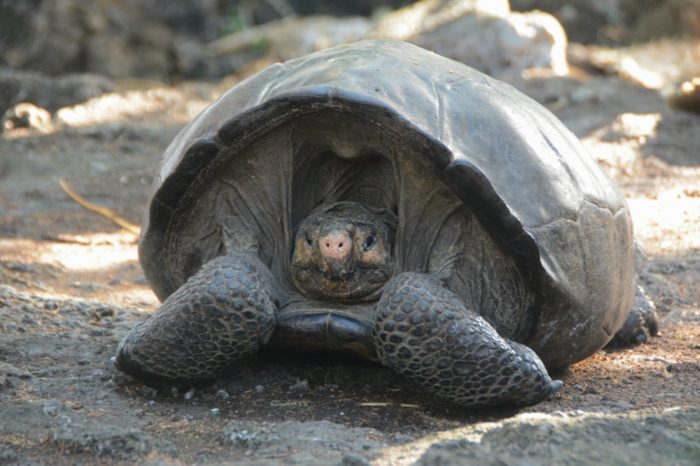A rare giant Galápagos tortoise has emerged from the shadows after being declared extinct more than 100 years ago. Scientists in Ecuador have confirmed that a turtle found in 2019 is a giant Fernandina tortoise.

Photo by Galapagos National Park
What Is a Fernandina Tortoise?
The Fernandina tortoise (Chelonoidis phantasticus) is a land tortoise native to the Galápagos Islands. They’re a chain of islands that are part of Ecuador.
These islands have many fascinating native species. Charles Darwin developed his theories of evolution while studying turtles and birds on the Galápagos Islands.
Finding Fern
In 1906, conservationists classed Fernandina tortoises as extinct.
In 2019, however, Galápagos National Park rangers were surprised to find a large tortoise whose species they couldn’t identify. They suspected she might be a Fernandina tortoise and named her Fern.
Fern is about 100 years old. Giant tortoises live up to 200 years on average.
Fern’s Confirmed
This month, scientists compared the tortoise’s DNA to the DNA of a Fernandina giant tortoise that was preserved at Yale University.
The results proved the workers were right. At least one Fernandina tortoise had survived after being ruled out a century ago.
Another Galápagos Tortoise Success
Scientists are now hoping to find more members of Fern’s family so they can breed them. Tortoise breeding programs have been highly successful.
In 2020, a giant Galápagos tortoise named Diego fathered hundreds of babies while in captivity. Diego and his little ones have all returned to the wild. Conservationists say Diego “saved his species.”
They are hoping Fern can do the same for hers.
Not Just Tortoises
The tortoise is not the first animal to reemerge after conservationists declared it extinct. In recent years, conservationists have confirmed sightings of Crete wild cats and Sumatran tigers.
The pygmy tarsier, New Guinea singing dog and Kashmir musk deer have all been seen after being declared extinct.
Fern’s Future Looks Bright
The future looks bright for any animal that survives despite habitat loss, climate change and other threats. With luck, Fern can help her species thrive and enjoy a bright future.

- Woman Fired From Law Firm After Feeding Zoo Monkeys Hot Cheetos
- Creative Woman Designs A Chair for Needy Pets
- Pets For The Elderly Charity Expands Effort To Help Isolated Seniors
- Neighbors Are Throwing A Social Distance Dance Party Every Morning
- Grandpa Has The Sweetest Dance-Off With Granddaughter From Across The Street
- ‘Teddy Bear Hunts’ Offer Kids A Fun And Safe Distraction Amid Coronavirus Lockdown
- Couple Recreates Iconic Woodstock Photo 50 Years Later